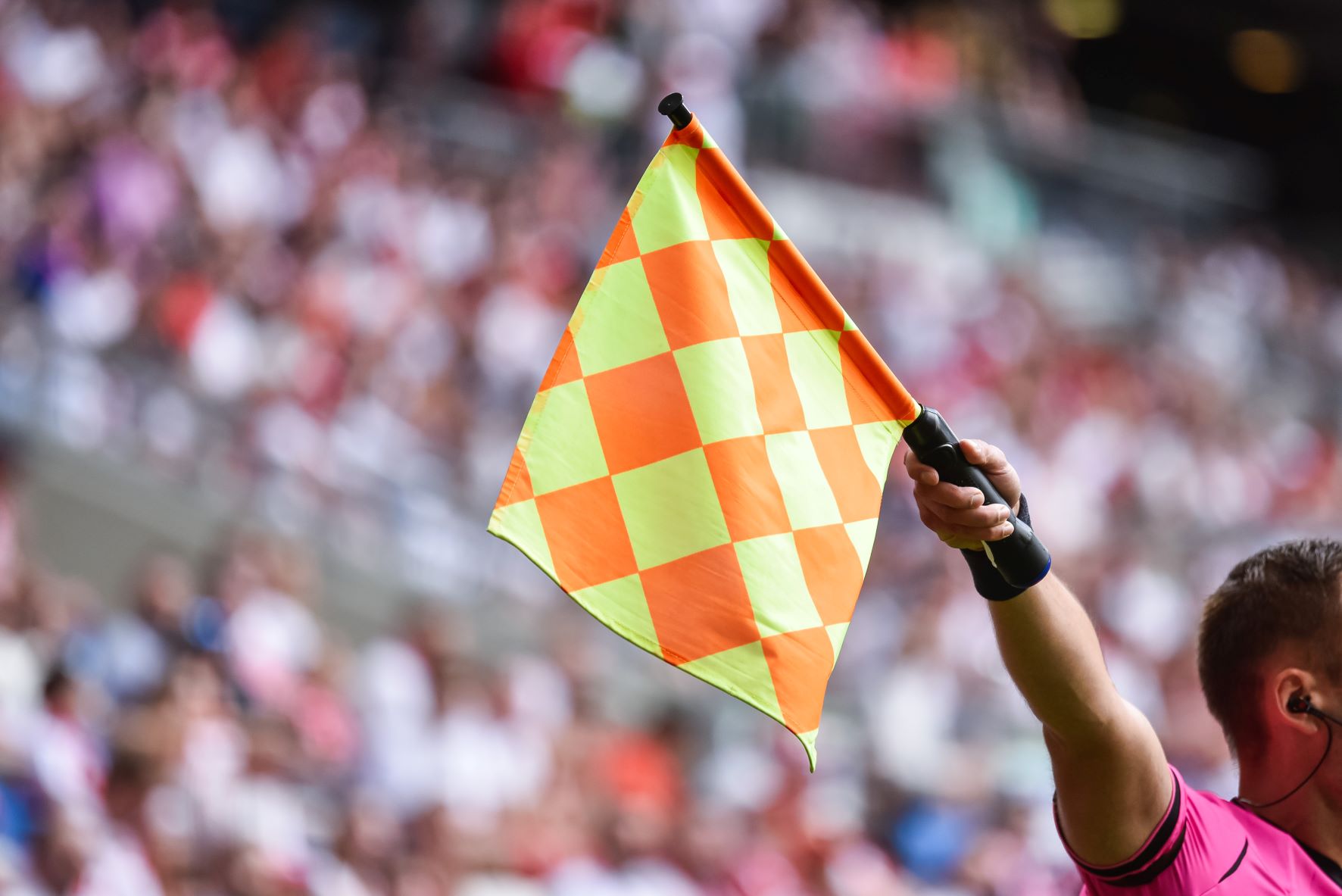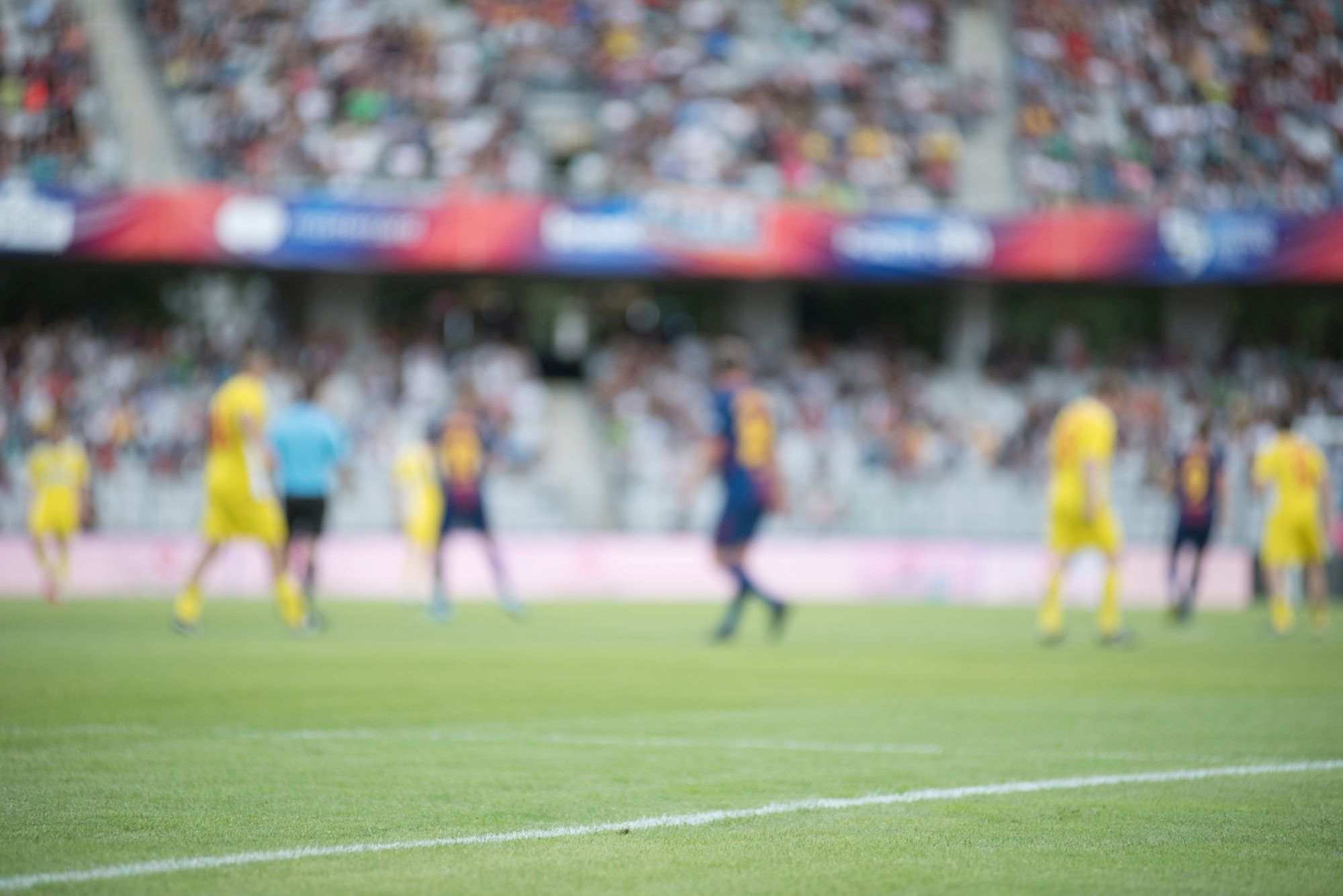The Long Read – The Development of Throw-Ins
The Development of Throw-Ins
“I am the first person in the world to always be thinking about throw-ins.” says Thomas Grønnemark. The Danish coach is the first in the history of football to specialise in throw-ins. In recent seasons he has worked as a freelance coach with some of the biggest clubs in the world, including Ajax, RB Leipzig, and Liverpool. He’s also been the subject of much more media attention than the average coach. People are intrigued by what he does, because it’s part of the game that tends to be taken for granted.
Throw-ins are one of the least glamorous parts of football. They are generally seen as just a simple way to get the ball back into play. After all, anyone can throw a ball. There has been so little interest in the humble throw-in over the years, that former Arsenal manager Arsene Wenger has repeatedly suggested that they ought to be replaced with kick-ins.
Former footballers such as Steve Nicol and Andy Gray have mocked the idea of a throw-in coach, but Grønnemark’s success suggests that the role isn’t as absurd as it may sound at first.
In the average Premier League match, there are about 40 throw-ins, making it the most frequent set-piece, more common than free-kicks, corners or penalties. This means that improving the way a team throws the ball back into play can have a significant impact on their performance. However, throw-ins have rarely received the kind of attention shown to other set-pieces.
The Early Days
When football and rugby first started to be standardised by the Victorians, the two sports were more similar than they are today. This is reflected in the very early rules for throw-ins, which the FA adopted in 1863. Like a line-out in modern rugby, the ball had to be thrown perpendicular to the touch-line, instead of forwards or backwards. This was eventually changed in 1877.
This wasn’t the only difference to the rules as we know them today. Until 1873, the throw-in was awarded to whichever team touched the ball first after it had gone out of play. It was also common among clubs Sheffield clubs to use a kick-in instead of a throw-in, something which almost became a standard part of the game, but was twice narrowly rejected at FA meetings in 1875 and 1876.
Until 1883, players could use just the one hand to throw the ball. Using one hand made it easier to throw the ball over very long distances. Billy Gunn, who was born in 1858 and represented the England national team at both cricket and football, was one of the early masters of the one-handed throw. As an outfielder on the cricket pitch he was known for his accurate throw and he used the skill to spectacular effect on the football pitch. His throws were so powerful that in a game against Scotland in 1882 he was able to throw from the touchline in England’s own half and reach the Scottish penalty area.
The Long Throw
Although the one-handed throw was banned, certain players over the years have had the ability to launch dangerous long throws into the box. Because it’s impossible under the rules for a player to be offside from a throw-in, a good long throw can be even more dangerous than a corner or a free-kick whipped into the box. The attacking players can get as close to the goal as they want and force the defenders back to their goal-line as they prepare for the ball to come in.
Ian Hutchinson, the former Chelsea striker, had a formidable long throw which lofted high into the air before dropping down into the penalty box. On his debut for Chelsea against Ipswich Town in 1968, one such long throw caused such panic in the Ipswich defence that they put the ball into their own net. His most famous long throw came in the 1970 FA Cup final against Leeds. In a match which has become renowned for its viciousness, including Hutchinson getting into a fist-fight with Leeds’s Eddie McCreadie, the game was won after a long throw by Hutchinson was headed in at the far-post by David Webb.
In the years after Hutchinson, lower-league players such as Andy Legg and Dave Challinor gained recognition for their long throws, but it was Stoke City’s Rory Delap who brought the long throw into the modern English Premier League.
The Irish international was a schoolboy javelin champion. Compared to the lofted throw of Ian Hutchinson, Delap’s throws were faster and flatter and shot through the air with a large amount of backspin. This meant that he was able to target specific areas of the penalty box. The flatness of the throws also made them much more difficult for defenders to deal with.
Delap’s throw-ins came to national attention in the 2008-09 season, when Stoke played their first season in the Premier League. Their first goal of the season came after Mamady Sidibe got on the end of a Delap throw and it became a regular part of Stoke’s attacking arsenal. “Most long throws tend to be a bit loopy, whereas Delap’s are fired in like a free-kick,” explained Match of the Day pundit Lee Dixon.[2]
To try to counteract the Delap long throw, teams tried various evasive measures. During a match in November 2008, Hull goalkeeper Boaz Myhill opted to knock the ball out for a corner rather than a throw-in, deciding that the former posed less of a threat to his goal. Teams such as West Ham and Burnley moved their advertising hoardings closer to the pitch to give Delap less space in his run-up. Such measures did little to stop him. During Delap’s first four seasons at Stoke, his throws led to 25 goals.
Eventually, though, as teams became used to playing against Stoke, the effectiveness of Delap’s throw did start to wane. It lost the fear factor it held when Stoke were new to the Premier League. The long throw can still be effective, though. In the women’s game, Megan Campbell, like Delap, an Irish international, has been regularly creating goals with her impressive long throws in recent seasons.
Delap’s long throws averaged a distance of 38 metres and reached speeds of 37 miles per hour, but his throws lag far behind those of Michael Lewis. The American currently holds the world record for the longest throw-in: an impressive 59.817 metres, which he achieved in Frisco, Texas in April 2019.

Lewis achieved this record using the flip throw technique. When running up to take the throw, he places the ball on the ground and flips his body over it, using the momentum this creates to increase the power of the throw.
Although it’s the best way to get distance on a throw, the flip throw is rarely seen in the professional game. Estonia’s Risto Kallaste and Iceland’s Steinþór Freyr Þorsteinsson have both used the flip throw and the Iranian defender Milad Mohammadi failed in his attempt to make one during the 2018 World Cup, but these are rare examples. What the flip throw gains in distance, it loses in accuracy, making it an ineffective way to pick out a team-mate.
The Throw-In Coach
Back in 2010, the Danish throw-in coach Thomas Grønnemark used a flip throw to set a then-world-record throw-in of 51.33 metres. At the time, he’d already spent over five years working on throw-ins at Danish clubs such as Viborg FF and FC Midtjylland.
Grønnemark had an unusual route into football coaching. Although he played football at youth level, he never became a professional footballer. Instead he became an athlete, running as part of the Danish national team, and then became a member of the Danish bobsleigh team. In 2004, he started to pursue his interest in throw-ins, developing the first ever training course and contacting clubs. He soon found Danish clubs willing to give his ideas a go.
In the 2017-18 Danish season, FC Midtjylland won the title and scored 10 goals from long throw-ins. The team’s left-back Andreas Poulsen was their star throw-in taker. His performances impressed visiting scouts and he secured a move to German club Borussia Mönchengladbach for a fee that made him the most expensive teenager in the history of Danish football. During his time working with Grønnemark, Poulsen increased the distance of his long throws from 25 metres to 37.9 metres.
It was Poulsen’s move to Germany that kick-started Grønnemark’s career. A tweet by the Danish coach about his work with Poulsen was noticed by a Gladbach fan site which then led to an interview in Germany with Sport Bild. The resulting article was read by both Jürgen Klopp at Liverpool and Ralf Rangnick, who was then managing German side RB Leipzig and who would later become manager at Manchester United in 2021. Both of these coaches are known for their innovative thinking and both saw the potential of using a specialist throw-in coach.
At Liverpool, Grønnemark’s has been just as success as he was in Denmark. When he joined Liverpool, they were the 18th best team in the Premier League when it came to keeping possession at throw-ins taken under pressure, retaining the ball just 45.4% of the time. After one season of working with Grønnemark, Liverpool had become the best in the league at these situations, keeping possession 68.4% of the time. The only team in Europe with a better rate was another of Grønnemark’s teams, FC Midtjylland. In the 2019-20 season, Liverpool scored 13 goals following a throw.
Working freelance, Grønnemark has a portfolio of different clubs across the world which he visits. Like a lot of modern coaches, he makes use of video analysis, watching footage of all the matches to assess the strength and weaknesses of their throw-ins. He’ll visit the teams about six or seven times a year, for two to four days of training each time, teaching the players the skills they need to improve their throws.
He teaches three kinds of throw-in: the quick throw, the clever throw, and the long throw. The quick throw is about getting the ball back into play quickly before the opposition has had time to settle. Grønnemark teaches players how to recognise when it’s right to take a quick throw and when to be patient and wait. The clever throw is about working as a team to create space and getting the ball into the feet of a player in a good position. The long throw for Grønnemark isn’t just about getting the ball into the box. That kind of direct play might suit Stoke City, but it doesn’t fit with the philosophy of clubs like Ajax and Liverpool. Instead, it’s about increasing the throwing distance so that the taker has more options available when picking out a team-mate. Keeping possession is key.
The aim of the training is to give a framework for the players to build on in the game, empowering them to make the most of the throw-in situation and avoid giving the ball away too easily. “Some people think that my coaching is like an NFL playbook,” Grønnemark told SkySports. “Yes, you can do that sometimes. We have some special things we do. But a lot of the time it is about giving the players options and then they have to make a decision.”
The importance of Grønnemark’s work is supported by the data. In a paper published by the International Journal of Sports Science and Coaching, researchers studied 16,154 throw-ins from the 2018-19 English Premier League season. They found a correlation between retaining possession from a throw-in and a higher final league position.[4] It’s about time that coaches everywhere started thinking more about throw-ins.
Related Courses:
Share this article
Our Learning Pathways
AnalyiSport is for everyone who is passionate about analysis in football. Where are you in your development journey?
Become a Football Scout
As more clubs than ever look to build data into their recruitment process, an understanding of recruitment analysis is your ticket to success in the game.
Related Articles
Our team provides news and insights from the cutting edge of football analysis.







